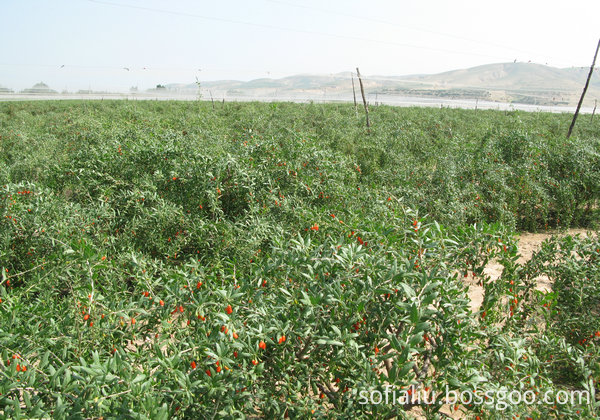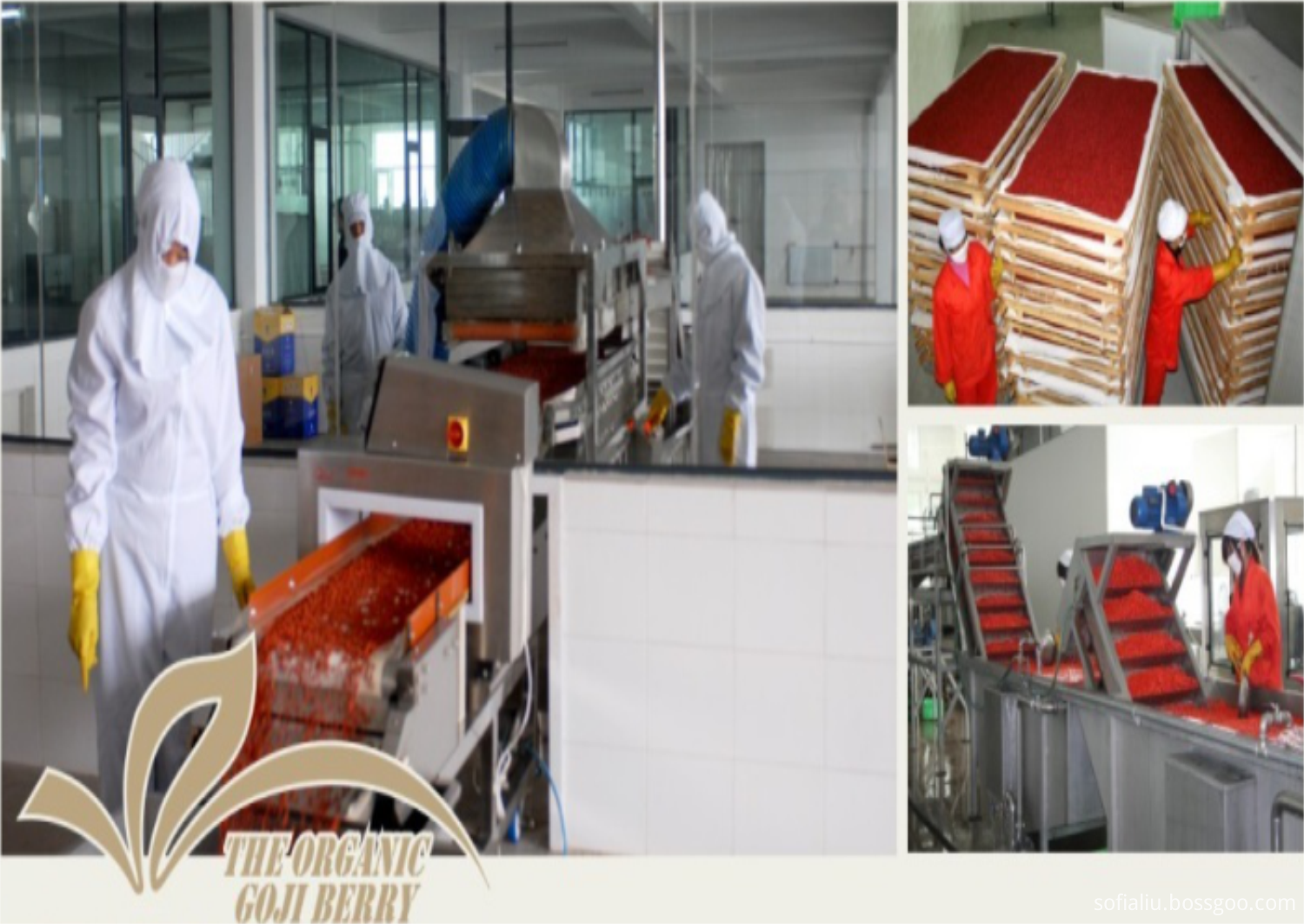Goji Berry is Chinese important "medicine food homology" functional genuine herbs. As the origin place and main producing areas of Chinese and world wide Goji berry, Ningxia Province has preponderant industry. Goji industry has been the important pillar in adjusting agriculture structure and transforming the economic growth pattern.
There are many problems in traditional Goji planting, such as non-standard planting, unstable quality, Goji low safety level, depending too much on chemical pesticide and fertilizer, polluting air and groundwater, delay ripening and integrating in corresponding cultivation techniques, low penetration of new technologies and extensive management. Our company began planting organic Goji berry from 2003, and has invested more than RMB 36 million. Using the mode of transferring land and subcontracting, we have established more than 75 hundred acres of organic Goji base in Zhongning, Haiyuan, Guyuan and Delingha, under the Good Agricultural Practices(GAP). High standard design, scientific management, standardize manufacture as organic standard from organic base choosing, plant breeding, planting, fertilizing, diseases and insect pests controlling, picking, to transportation, further processing, sale. We apply quality traceability system, mechanized farming, standardized management, proceeding operation, stoving and processing together.
Wolfberry Company mainly introduces Goji diseases and insect pests bio-control technology in technique, such as matrine, veratrine, Cynanchum komarovii, pyrethrum; also introduces modern high biological technology (natural biological and plant pesticides such as biological protective agent, fertilizer-making agent, soil purificant, ferment fertilizer, biological enzyme, Cynanchum komarovii), combining use "prevent", "tempt", "seal", "engineer", "change", "drug".Effective prevent and control Goji pests and diseases, achieve manufacturing "safe, effective, steady, controllable" high quality organic Goji.
Our company is the only enterprise internationally recognized organic food certifications by NOP, EU, JAS and China, is the birthplace of Chinese organic Goji berry.

Wolfberry Company is the birthplace of Chinese organic Goji, is the only company planting organic Goji. Now we have more than 75 hundred acres of Goji planting Base, which are under organic planting standard, without using chemical pesticide and fertilizer. Their production mode is ecological, natural and safe. Products reach the North America, European Union and Japanese level including requirements in pesticide residue, chemical substances residue, residue of veterinary drug, which guarantee the quality from production source. Our base and plant have internationally/nationally recognized organic food certifications such as NOP, EU and JAS.
Our technological innovation team led by Professor brings Goji industry further in line with international standards. With the combining mode of industry, academia and research, our company established Goji technological center of Ningxia. There are 19 technological experts, including 12 senior title staff, 2 Doctors and 4 Masters. This team gathers many fields professionals such as Goji further processing, food engineering, automatic control and food analysis and verification, and make great contribution in defining enterprises standard, industrialization demonstration, cultivation of Goji further processing enterprise, organic Goji manufacturing practices and reaching international standard.
Please feel free to leave us message.
Any inquiry would be replied within 2 hours on working days!

Production Specification Sheet
|
Product Name |
Goji Berry |
Country of Origin |
Ningxia in China |
|
ANALYSIS |
DESCRIPTION |
TEST METHODS |
|
|
Product Name |
Organic Goji Berry |
||
|
Form |
Spindle and slightly shrinks |
SN/T 0878 |
|
|
Color |
Bright red or purplish red |
SN/T 0878 |
|
|
Taste and Smell |
Characteristic |
SN/T 0878 |
|
|
Size |
280granule/50gram |
160granule/50gram |
SN/T 0878 |
|
Total bacterial count, cfu/ml |
≤100000 |
GB4789.2 |
|
|
Salmonella |
Absence |
GB/T 4789.4 |
|
|
SO2 |
NMT 30 |
SN/T 0878 |
|
|
Moisture, % |
NMT13 |
GB/T 5009.3 |
|
|
Pb, mg/kg |
NMT 2.0 |
GB/T 5009.12 |
|
|
As, mg/kg |
NMT 1.0 |
GB/T 5009.11 |
|
|
Cu, mg/kg |
NMT 10.0 |
GB/T 5009.13 |
|
|
Pesticide Residue |
Acetamiprid <0.2PPM; Imidacloprid<0.2PPM; Fenvalerate<0.1PPM; Cypermethrin<0.1ppm negligible with other pesticides |
Negative |
GB/T 19648-2006, GB/T 200769-2008 |
|
Shelf life |
12 months months if stored in a cool ventilated dry place |
|
Package |
4.54Kg/Bag, 4Bags/ Carton (10Pounds/bag,4bags/Carton); 5KG/Bag,4Bags/Carton |
|
Storage |
It should be stored under the dry and ventilated environment in original bag, the temperature no more than 20 ℃ |
Goji Berry
Goji Berry,Goji Berry Plant,Goji Berry Juice,Organic Dried Goji Berries
Ningxia Wolfberry Goji Industry Co.,ltd , http://www.nx-wolfberry.com